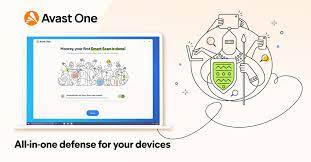Developing safe browsing habits and practicing good email hygiene are crucial for preventing online fraud. Here are some important tips to follow:
Safe Browsing Habits:
- Keep Software Updated: Regularly update your operating system, web browsers, and plugins to ensure you have the latest security patches and bug fixes. Outdated software can contain vulnerabilities that attackers can exploit.
- Use Secure and Trusted Websites: When conducting online transactions or sharing sensitive information, ensure you are on a secure website. Look for “https://” in the URL and a padlock symbol indicating a secure connection. Avoid entering personal information on unsecured or suspicious websites.
- Be Cautious of Email Attachments and Links: Exercise caution when opening email attachments or clicking on links, especially if they are unexpected or from unknown sources. Verify the sender’s identity and ensure the email is legitimate before interacting with any attachments or links.
- Employ Ad Blockers: Ad blockers can help prevent malicious ads from appearing on websites, reducing the risk of inadvertently clicking on malicious content.
- Be Wary of Pop-ups and Unsolicited Downloads: Avoid clicking on pop-up windows, especially those offering downloads or claiming that your computer is infected with malware. These can be deceptive tactics used to install malicious software on your device.
- Regularly Clear Cookies and Browser Data: Clear your browser cookies and cached data regularly to remove potentially sensitive information that could be used by attackers.
Email Hygiene:
- Be Skeptical of Unsolicited Emails: Exercise caution when dealing with unsolicited emails, especially those requesting personal information, login credentials, or financial details. Be wary of emails that create a sense of urgency or use threats to prompt you into taking immediate action.
- Verify Email Senders: Verify the authenticity of email senders before responding or clicking on any links. Pay attention to the email address, domain, and any suspicious or misspelled details.
- Don’t Share Personal or Financial Information via Email: Avoid sending sensitive information such as passwords, credit card details, or social security numbers via email. Legitimate organizations typically do not request such information via email.
- Enable Spam Filters: Enable spam filters provided by your email service provider to automatically filter out and block suspicious or malicious emails.
- Use Strong Email Passwords: Ensure your email account is protected with a strong, unique password. Avoid using easily guessable passwords and consider enabling two-factor authentication for added security.
- Be Cautious of Phishing Emails: Be vigilant for phishing emails that attempt to trick you into revealing personal information or visiting malicious websites. Look for signs of poor grammar, misspellings, or unusual email formatting.
- Report Suspicious Emails: If you receive a suspicious email, report it to your email service provider or the organization being impersonated. This helps them take appropriate action and protect other users.
- Educate Yourself on Email Scams: Stay informed about different types of email scams, such as phishing, spoofing, and social engineering techniques. Regularly educate yourself on the latest trends and tactics used by scammers to stay vigilant.
By adopting safe browsing habits and practicing good email hygiene, you can significantly reduce the risk of falling victim to online fraud and protect your sensitive information. Stay proactive, stay informed, and exercise caution when interacting with online content.
SHARE
